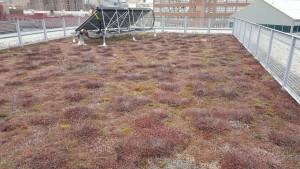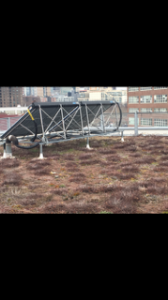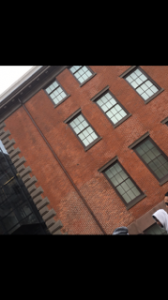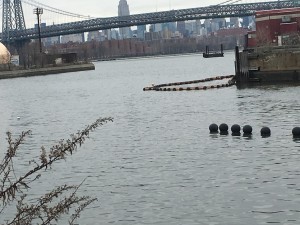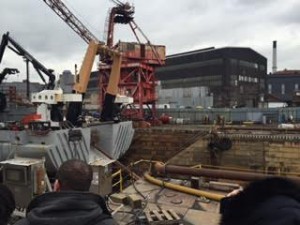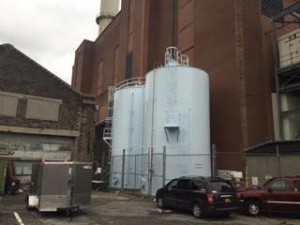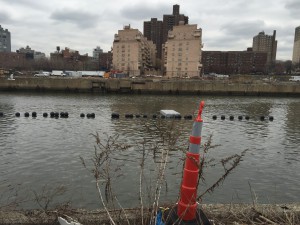I found the trip to the Brooklyn Navy Yard as a very interesting experience. what I found really interesting was the fact that most of their buildings were not new structures built from scrap but instead they used old building and just remodeled them to fit modern styles. The entrance building of our trip was what caught my attention the most the fact that they built a new building over a very old building to preserved it, that was not something that you see every day so it was really interesting 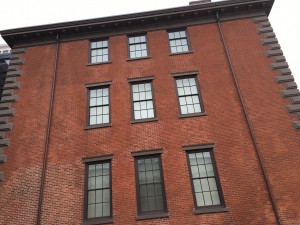

Monthly Archives: February 2016
Brooklyn Navy Yard Tour
I found our trip to the Brooklyn Navy Yard to be very interesting and informative. We looked at and learned about several different ways to to clean up and preserve our environment. From using animals, such as clams, as filters, keeping roof-top gardens, or even building portable apartments in separate locations and later transferring them to their desired location in order to cause less disruption and mess in busy neighborhoods.
Brooklyn Navy Yard Photos
The extensive green roof system requires low maintenance and is able to run on very little water. It is also able to withstand harsh environments. The plants used are called seedum plants and they are particularly popular in green room systems.
Building 92 was listed as a historical monument. Although they have modernized one half with a glass exterior, this side has preserved its original architect.
This part of the yard provided a nice view of the NYC skylines. The round black balls have hundreds of oysters under them. The oysters are used to filter the water that comes out of the sewage system.
Reading for Wed. Mar. 2
Reading for Wed. March 2:
Question for discussion: What are the reasons McClintock believes we should farm the city?
Brooklyn Waterfront Research Center
Brooklyn Waterfront Research Center at City tech
Brooklyn Navy Yard
I was very excited to go to the Brooklyn Navy Yard. It seemed to be a very mysterious place, as it is closed off to the general public and maps of New York City display the BNY as taking up quite a bit of space.
The BNY is a self sufficient industrial park that was originally a Naval base of operations. Many of the structures were maintained and repaired to resemble their original architecture. Despite maintaining the older look, the BNY has made many technological advances and this new tech is all over the place. There were large almost outdoor facilities for large scale manufacturing of modular homes. There are solar powered trash compacting garbage cans throughout the facility. The BNY also has its own power plant, which runs the facility using a mix of steam and electric, to the point that excess energy is sold to ConEd.
There is a Dry Dock, which allows for repairs of the portions of ships that are usually submerged. There were oyster beds that are being used to determine if water can be filtered naturally, to help with the NYC waste problem. Also, there are tons of companies that are producing innovative technology.
All in all, I was very happy with the visit, I only wish we could have seen more.
Photos: Dry Dock, Power Plant and historical repairs
Brooklyn Navy Yard
My overall experience at the Brooklyn Navy Yard was one of the most interesting ones that I ever had as a New York resident for many years. The Brooklyn Navy Yard gives all of us a great lesson on how efficient and creative people can be when they are put together in a closed-knit community. Because for me the Navy Yard is a small community with a lot of organization that can achieve all its financial and environmental goals in the best possible way with less damaging effects on our ecosystem. The tour also taught me how important it is that if all of New York implements the systems for energy production they can change this city for the better and why not be an example for the whole nation and even the whole world. The term sustainability is being used a lot nowadays but if you visit the navy yard you will come to understand what it means and how better our lives can be if the whole city got together and put the navy yards methods to practice. I think this visit was a memorable one and very educational for a person who wants to explore other methods for finding other energy efficient production methods.
Readings for Wed. 2/24 are posted
Please see posted links to readings for 2/24; Read articles, bring to class and be prepared for discussion.
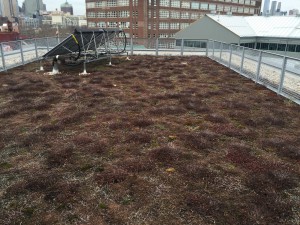 The extensive green roof system, which has plants (seedum plants) that are low maintenance and are used to absorb a lot of the water from the rainfall. The solar panel to the left of the picture is part of a solar thermal system which provides hot water to the building.
The extensive green roof system, which has plants (seedum plants) that are low maintenance and are used to absorb a lot of the water from the rainfall. The solar panel to the left of the picture is part of a solar thermal system which provides hot water to the building.

